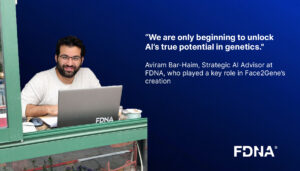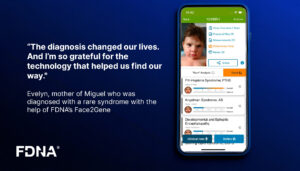September 26, 2017
PACS1 is an extremely rare genetic disease with roughly 30 confirmed cases globally. It results in mobility, motor and cognitive delays and disabilities. Through the collaboration and collection of syndrome data, Face2Gene can now recognize and detect associations between PACS1-related facial characteristics and other phenotypes and genes.
“According to recent studies, approximately one-third of all patients admitted to children’s hospitals have genetic disorders. Many of these are quite rare and traditionally can only be diagnosed when recognized by an astute clinician,” said Robert Hopkin, MD, in the Division of Human Genetics at Cincinnati Children’s. “PACS1 is typically confirmed using genetic testing, and now Face2Gene can help clinicians recognize the PACS1 phenotype earlier—especially where genetic testing is unavailable.”


